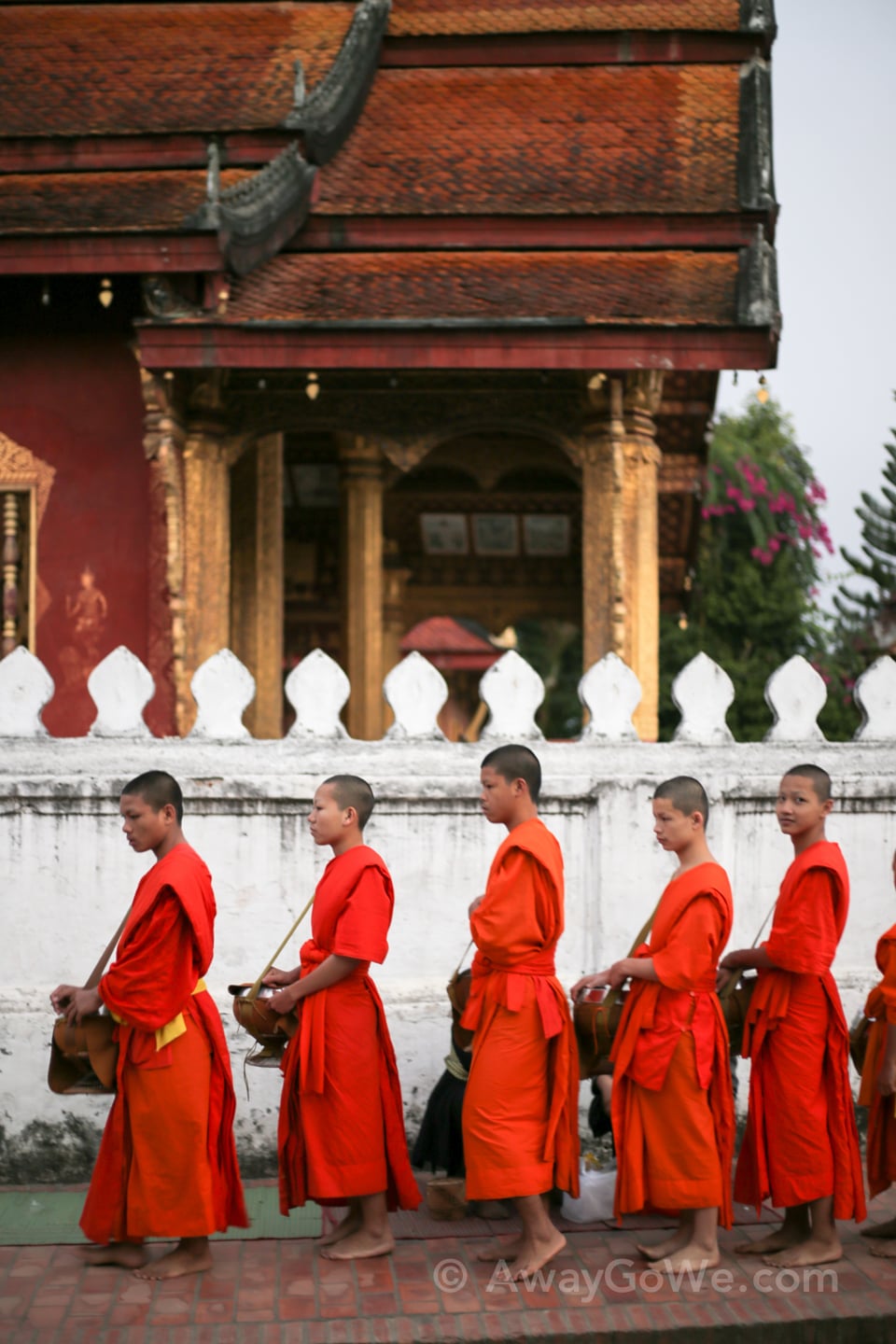
Up early at 6am to catch tak bat, the almsgiving for which Luang Prabang is famous. Despite having visited Luang Prabang since moving to Laos in September, this is our first time up to see tak bat here in four years.
Even in 2012, Luang Prabang was struggling to find a balance between benefiting from the tourist draw (and accompanied revenue) that tak bat has attracted over the past decade and allowing the age old practice to continue in traditional fashion. Lori and I remember doing our best to adhere to all of the official and unofficial rules of observing tak bat, and feeling surprised and embarrassed by the few tourists that did not adhere to these rules — the occasional camera flash, speaking loudly, wandering too close to the monks’ pathway. Sadly, those appeared to be mild transgressions compared to what we observed here in 2017.
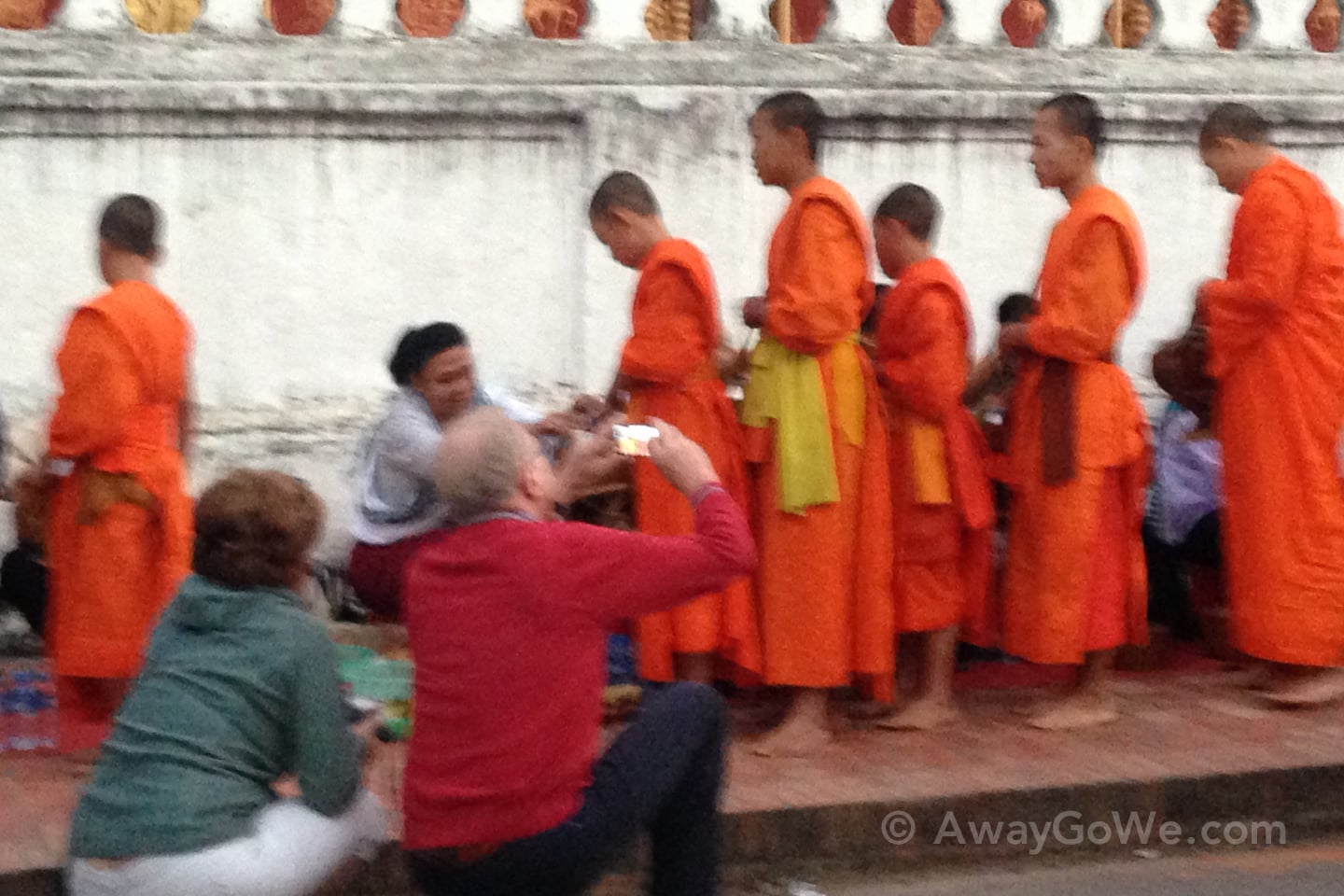
So many flashes, so many tourists invading personal space of the novice monks performing their sacred daily ritual. And so many more foreigners participating (giving alms) — most of which not bothering to follow the basic rules governing almsgiving (wearing a sash, sitting properly (lower than the monk), being still, silent and reverent).
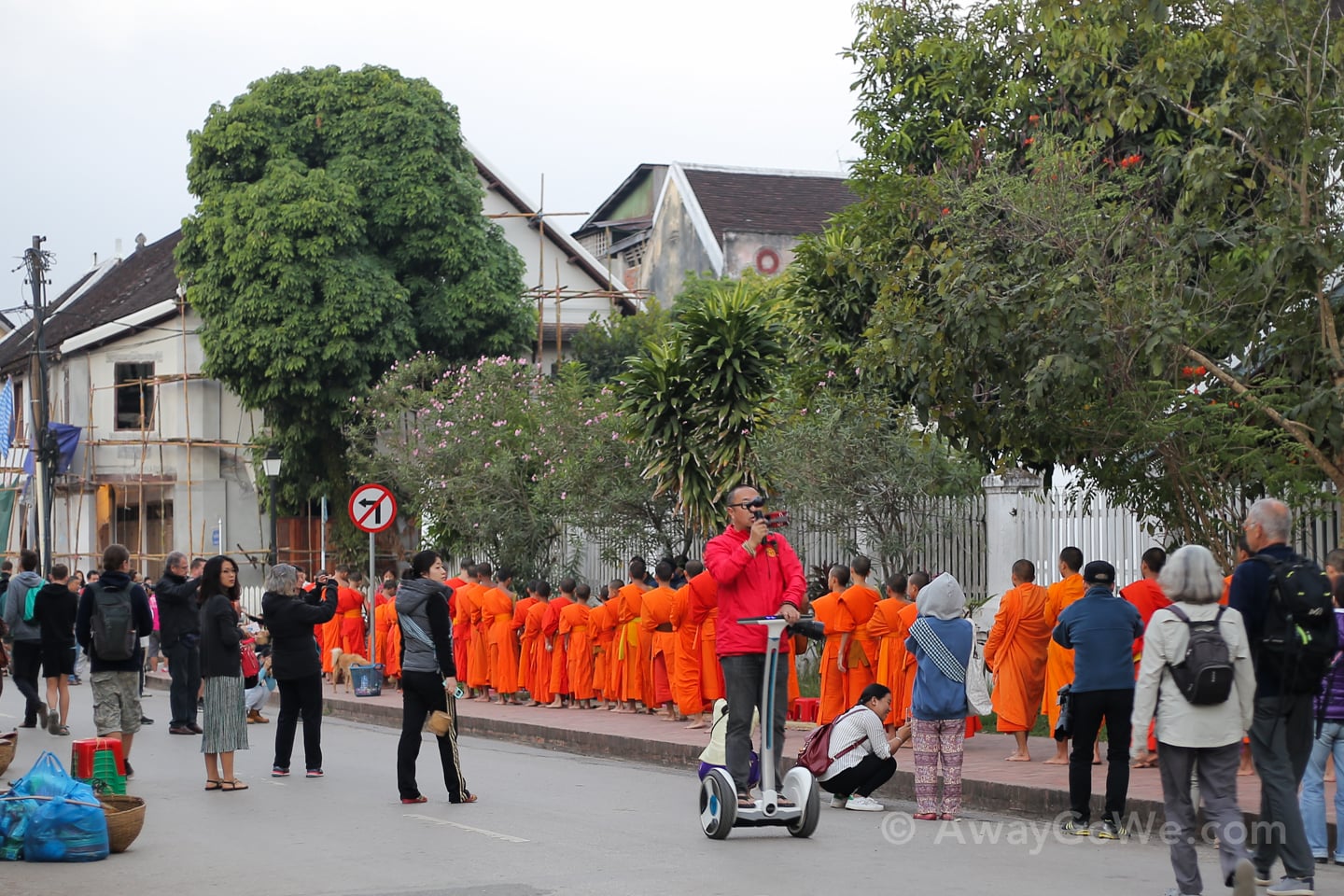
Not to mention this guy. Are you kidding?
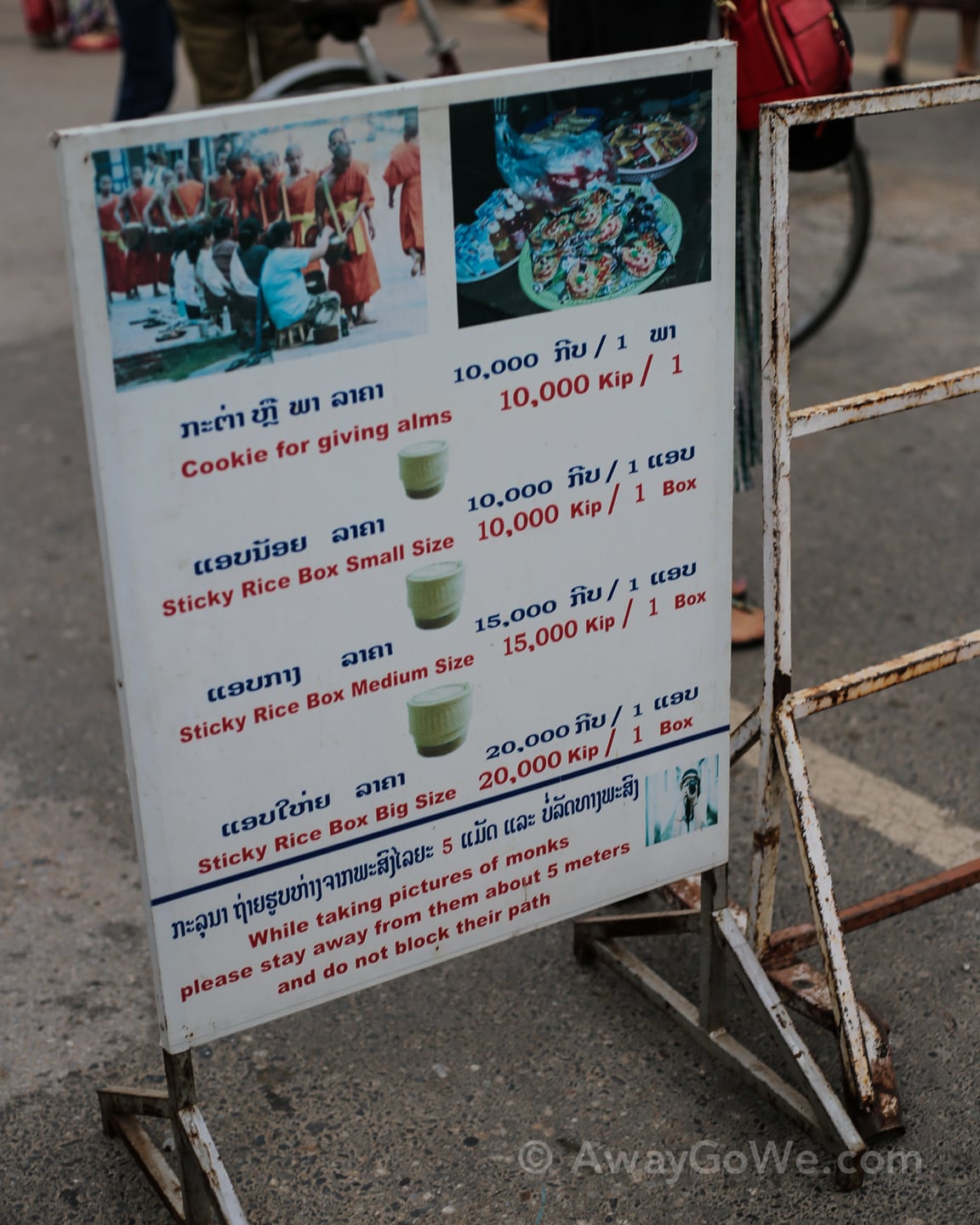
Only a tiny fraction of the visitors we saw on this particular day stayed the requested “5 meters” away from the monks. At one point, there was even one particular individual who set up a tripod with a video camera in the monks’ path.
It’s hard not to be saddened by what appears to be a deterioration of respect for this time-honored ritual. For the life of us, we can’t figure out what’s so hard about giving the monks space and offering them the same courtesy and respect you would anyone — particularly someone performing a daily religious ritual in their own country.
With that said, I suppose things could be worse. But still, I feel a deep sense of loss for this deeply spiritual community. I know that many would say that if the crowds financially benefit the community then it’s worth it. But at what cost? I realize some in the community benefit directly from the tourism aspect of tak bat, but most do not. My understanding is that most in the community wish the practice to continue as it has for a very long time, but also benefit from tourism. Certainly, there must be a middle ground. Certainly, it can’t be too much to ask we as visitors to adhere to a handful of very basic tenants, right?
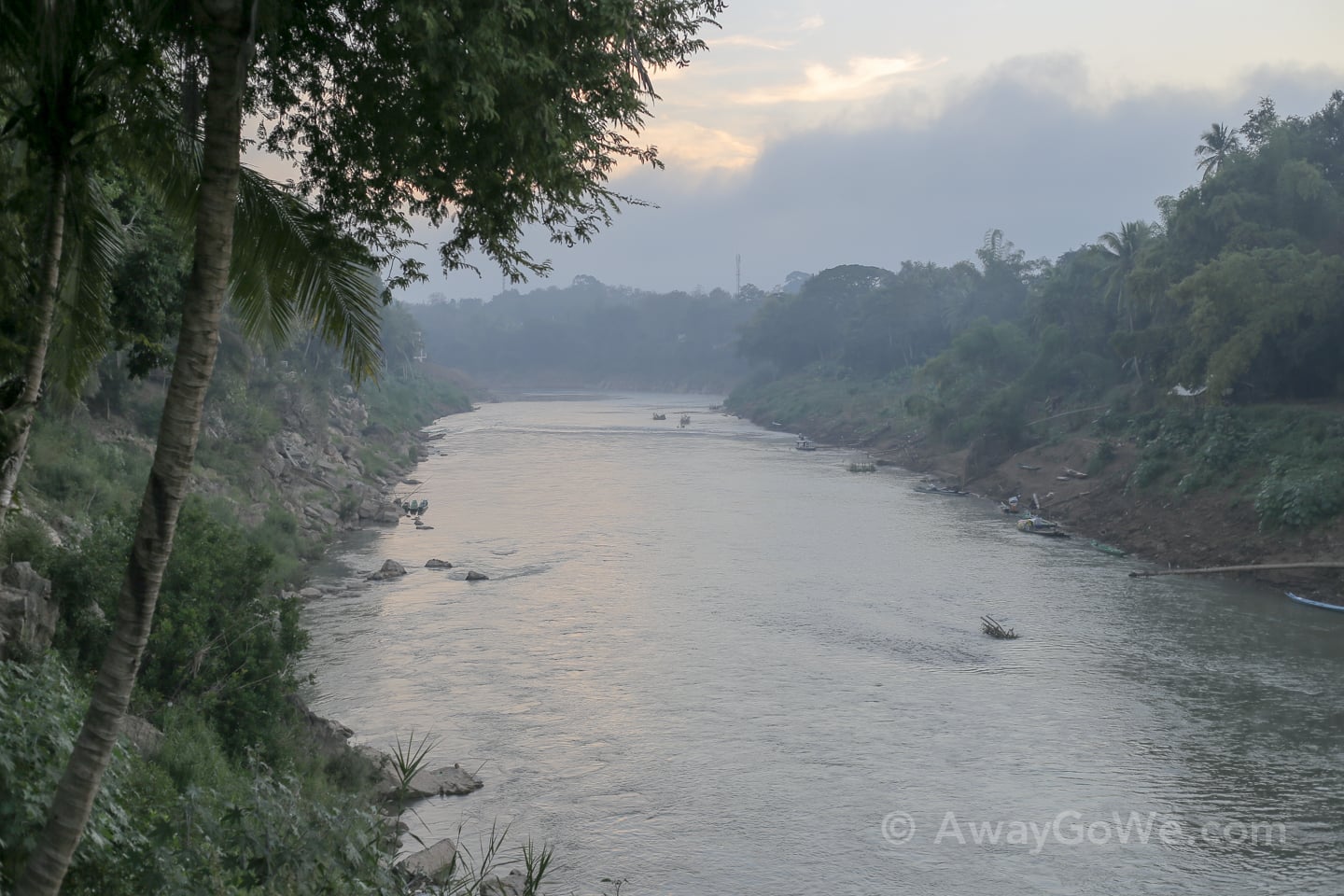
Morning in Luang Prabang in winter. It’s been much cooler in the mornings here than in Vientiane, mid to upper 50s as opposed to mid-70s.
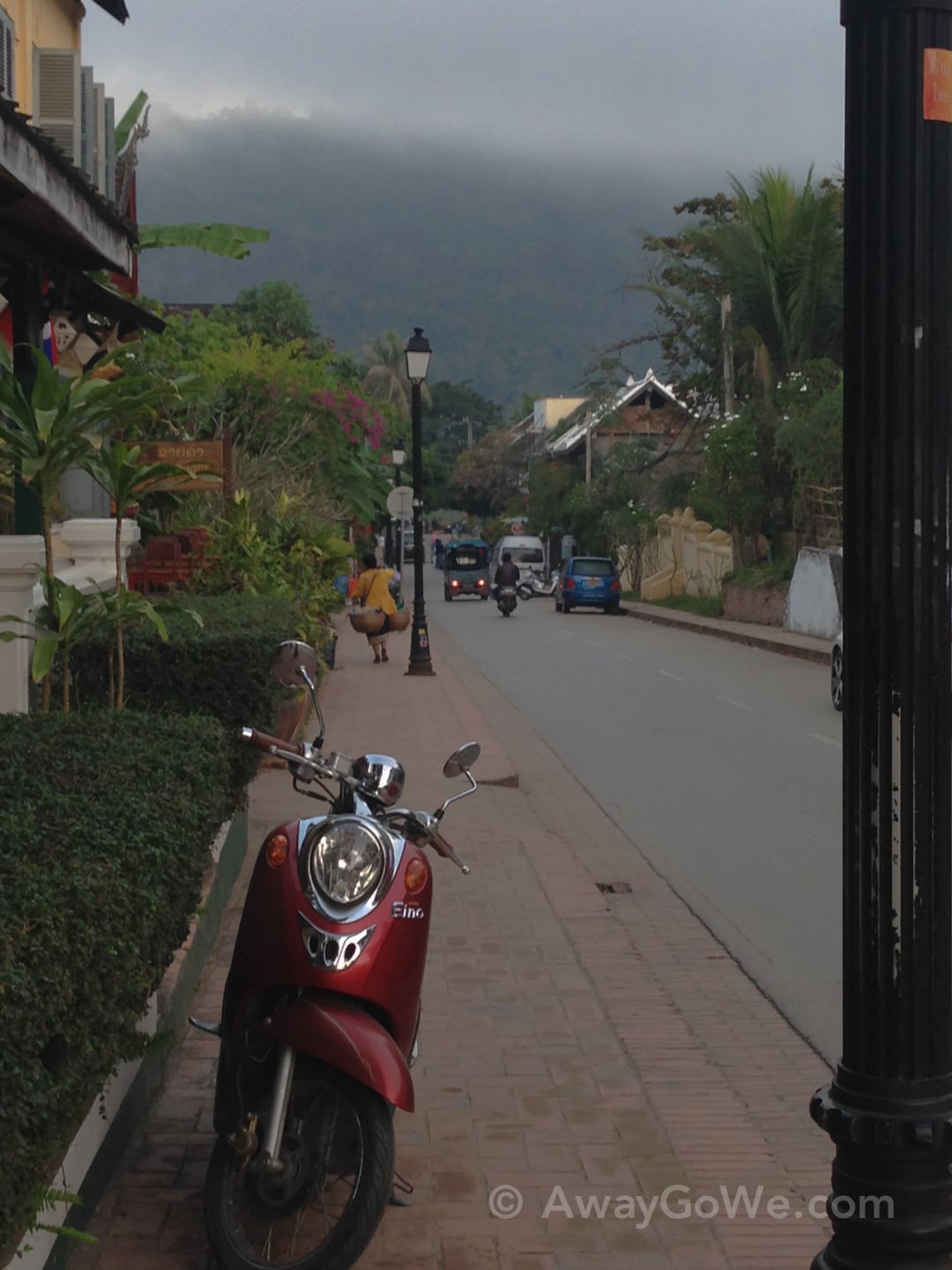
Our flight is around noon, and it’s about a 15-minute songteau ride out to the airport from where we’re staying, which means we have some spare time this morning. The rest of our group has decided to relax and tie up some loose ends. Lori and I are feeling restless, so we hop an auto ferry to the other side of the Mekong for a short little hike.
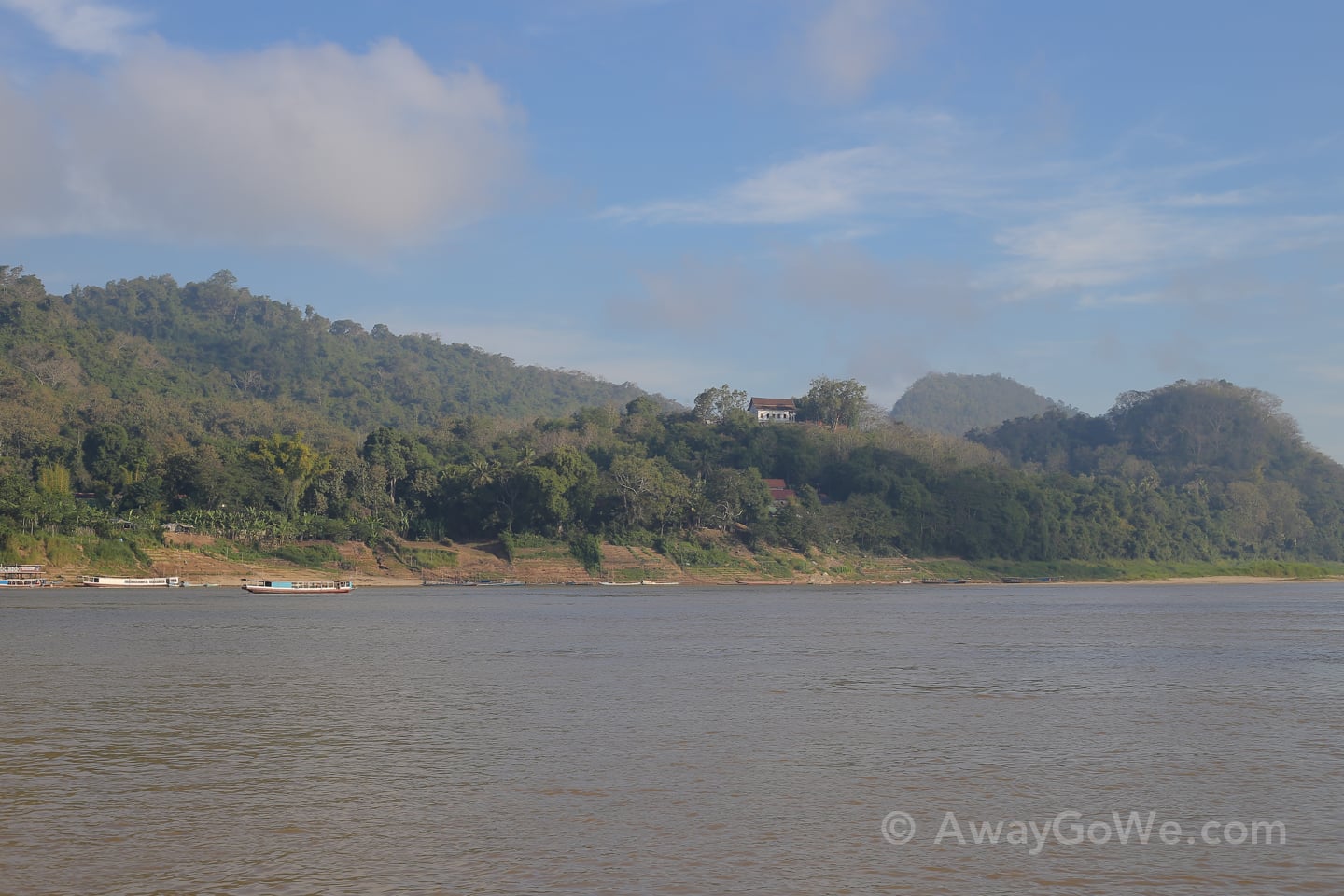
It’s our third time on this side and every time I’m amazed at how quickly we leave the tourist crowds behind. Five minute ferry ride and you’re in a world apart from the tourist Mecca of Laos. We’ve seen one or two other couples walking the main road of the village, but never encountered any other foreigners at the string of wats and shrines tucked up along the ridge. The first of which is Chomphet.

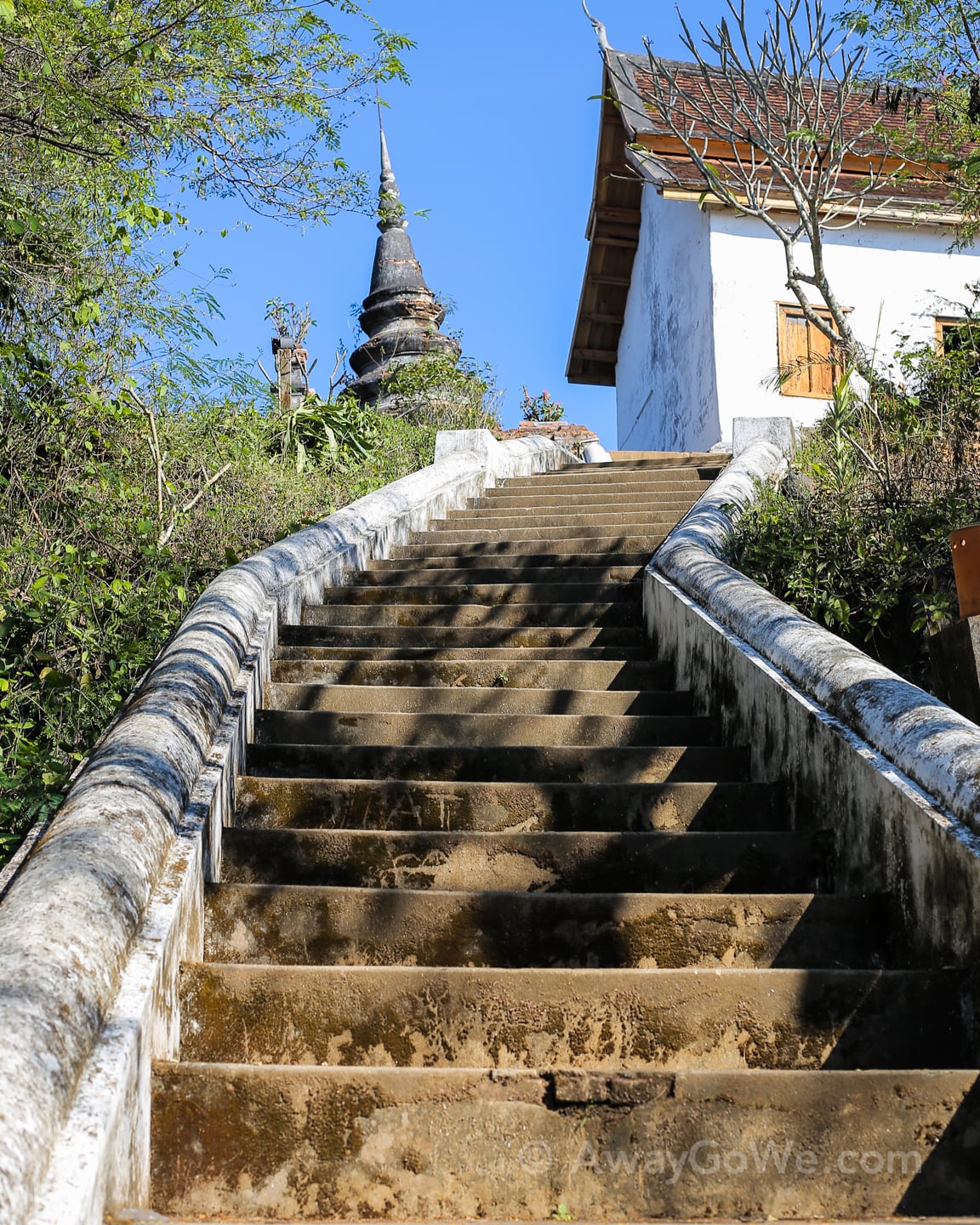
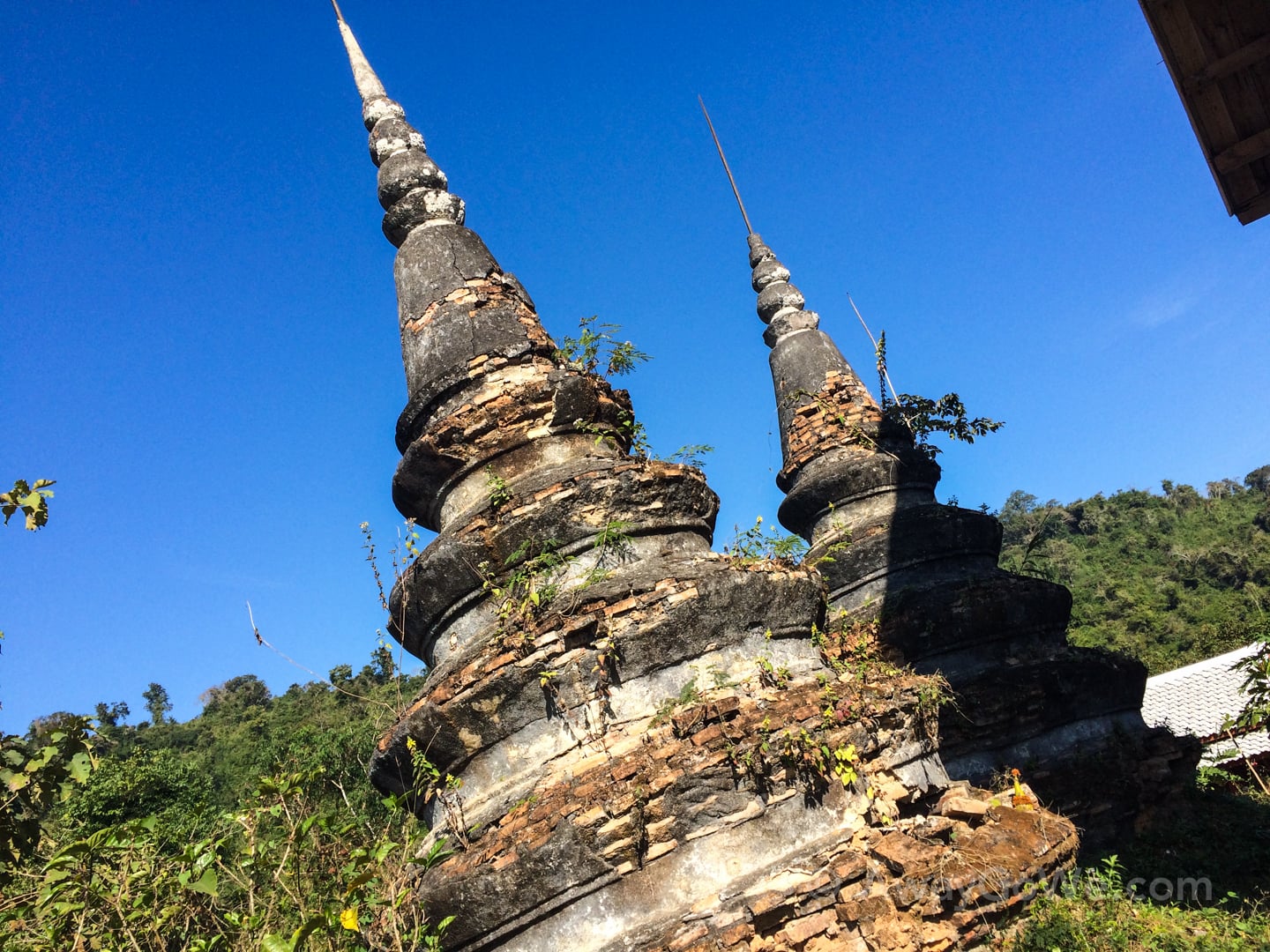
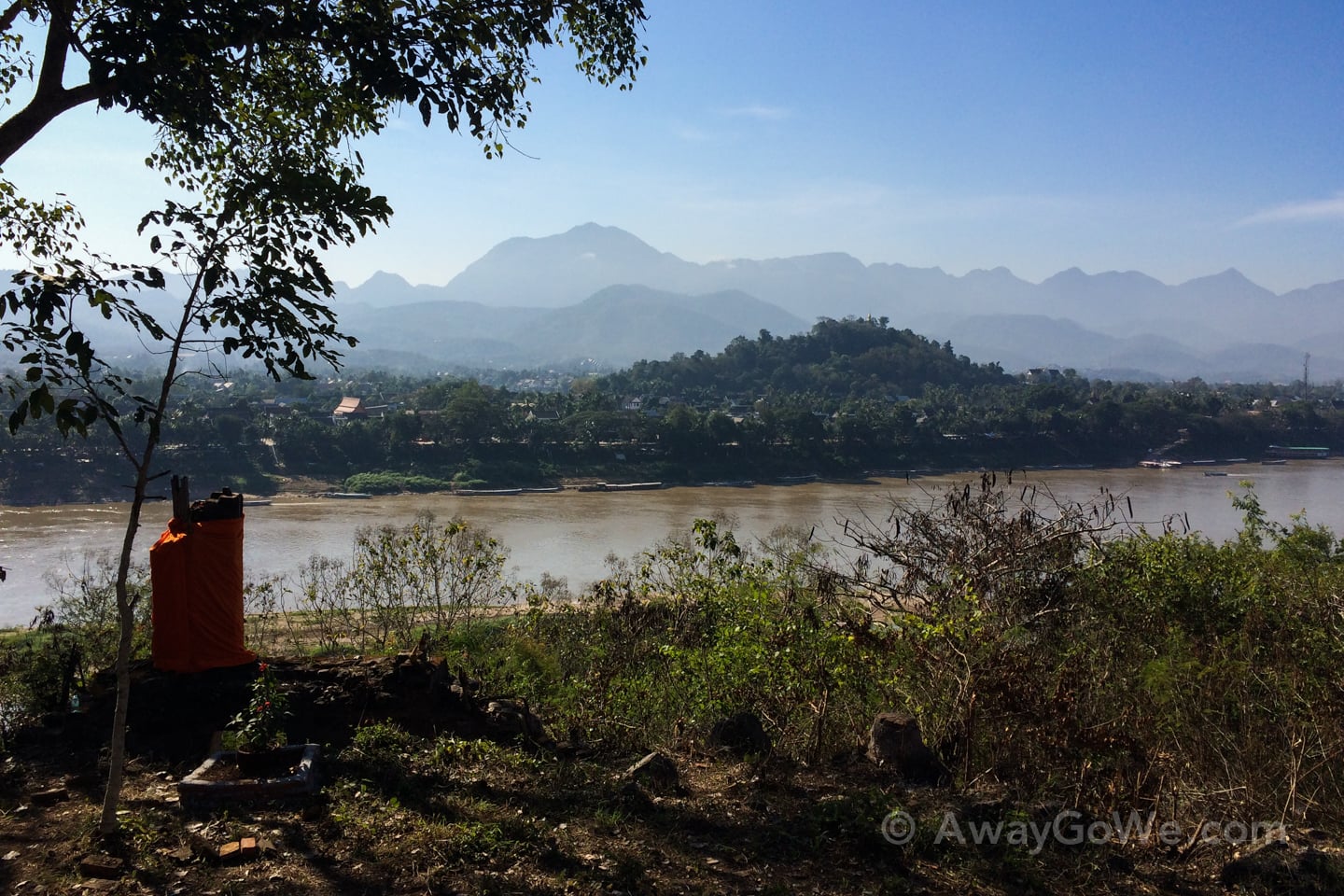
It’s quiet up here — nothing but the cluck of nearby chickens and the whistling wind. I’ve always thought the view was much better on this side of the river. Across the Mekong, Phu Si rises front and center, framed by majestic hills reaching to the sky. It’s easy to forget about the tour groups, crowds, and traffic quickly gathering in the town center as day gets into full swing.
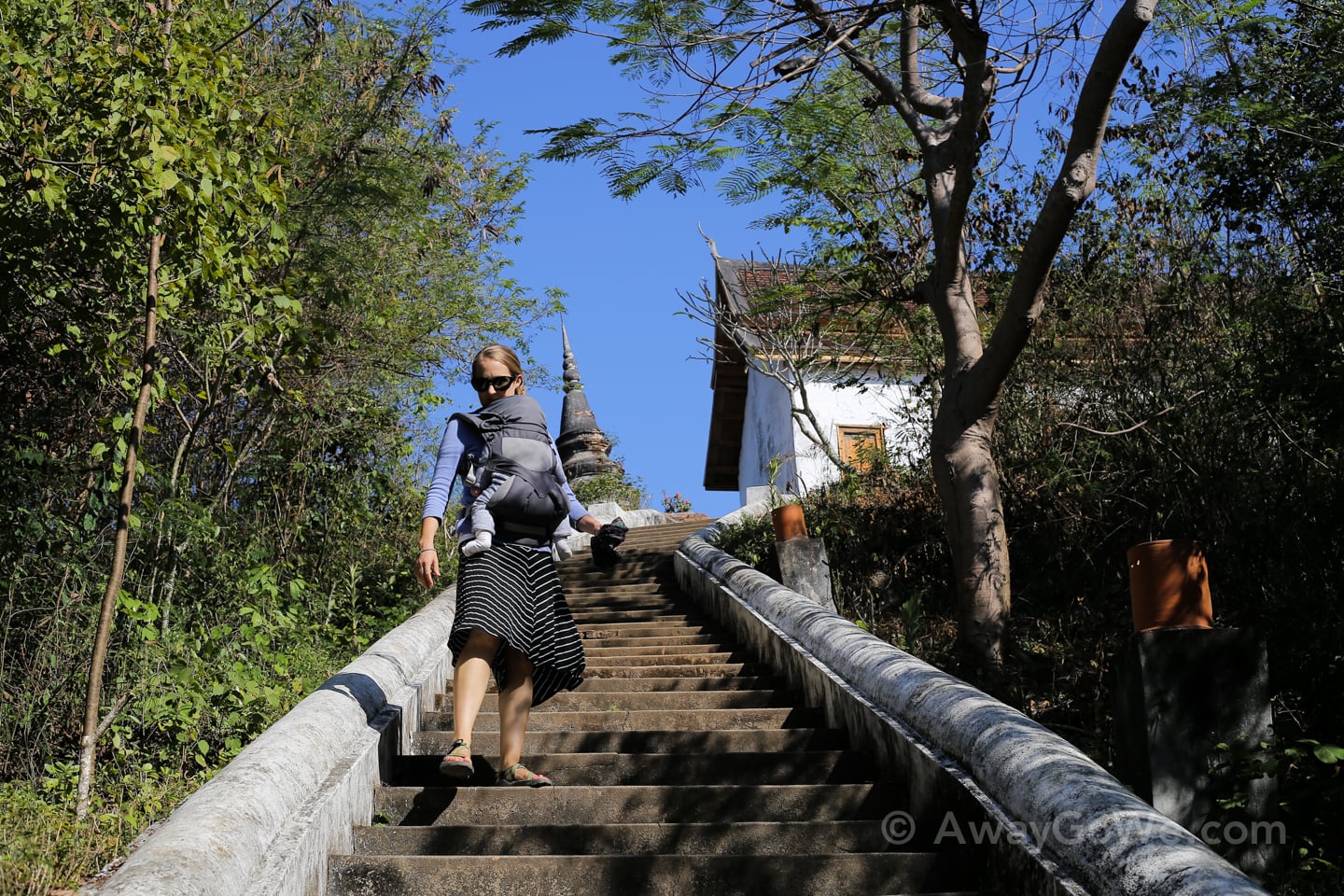
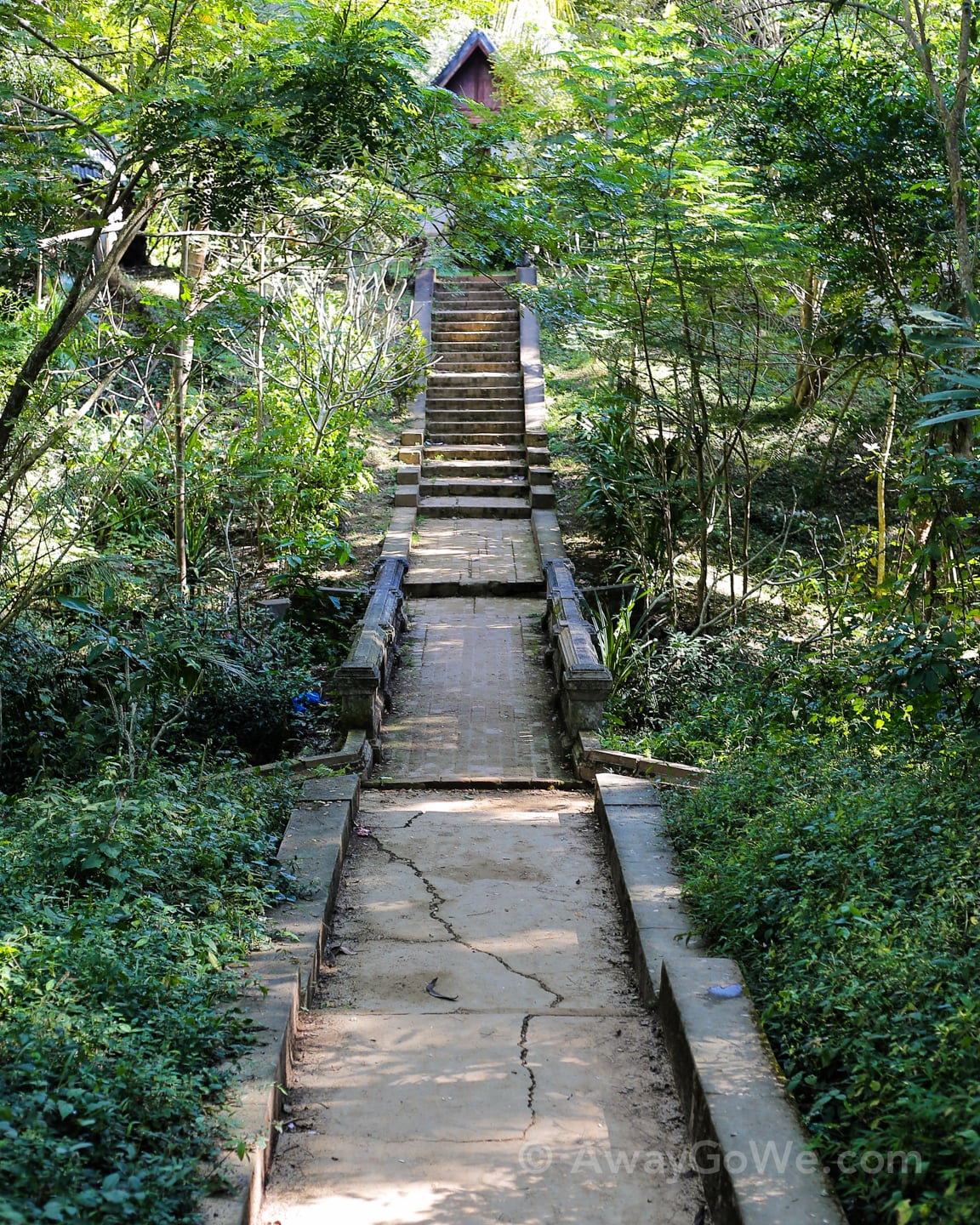
We made it as far as Wat Longkhun before turning around. Sakkalin cave will have to wait until next time.
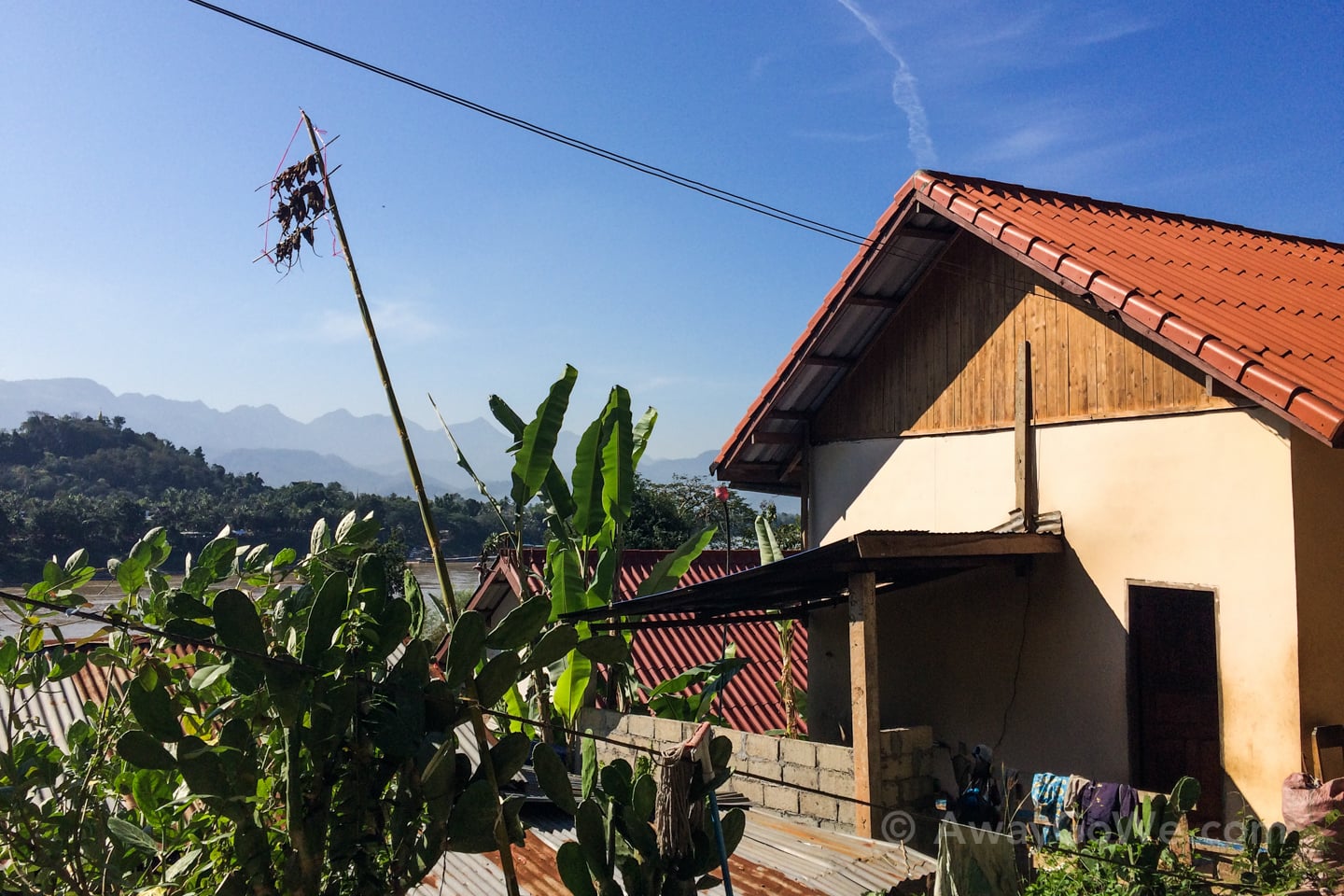
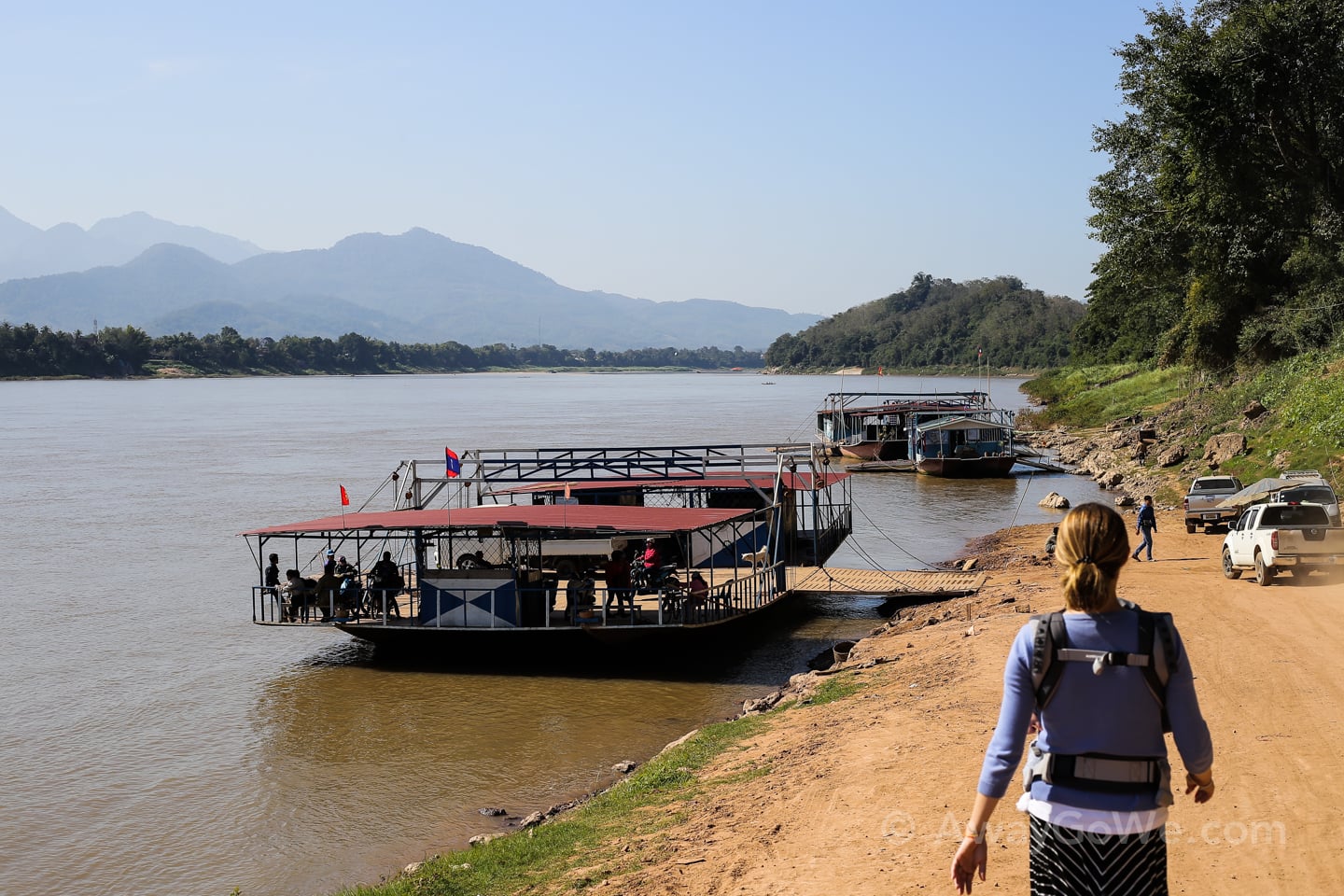

Noe gets some Grampy time at the Luang Prabang airport before returning to Vientiane.
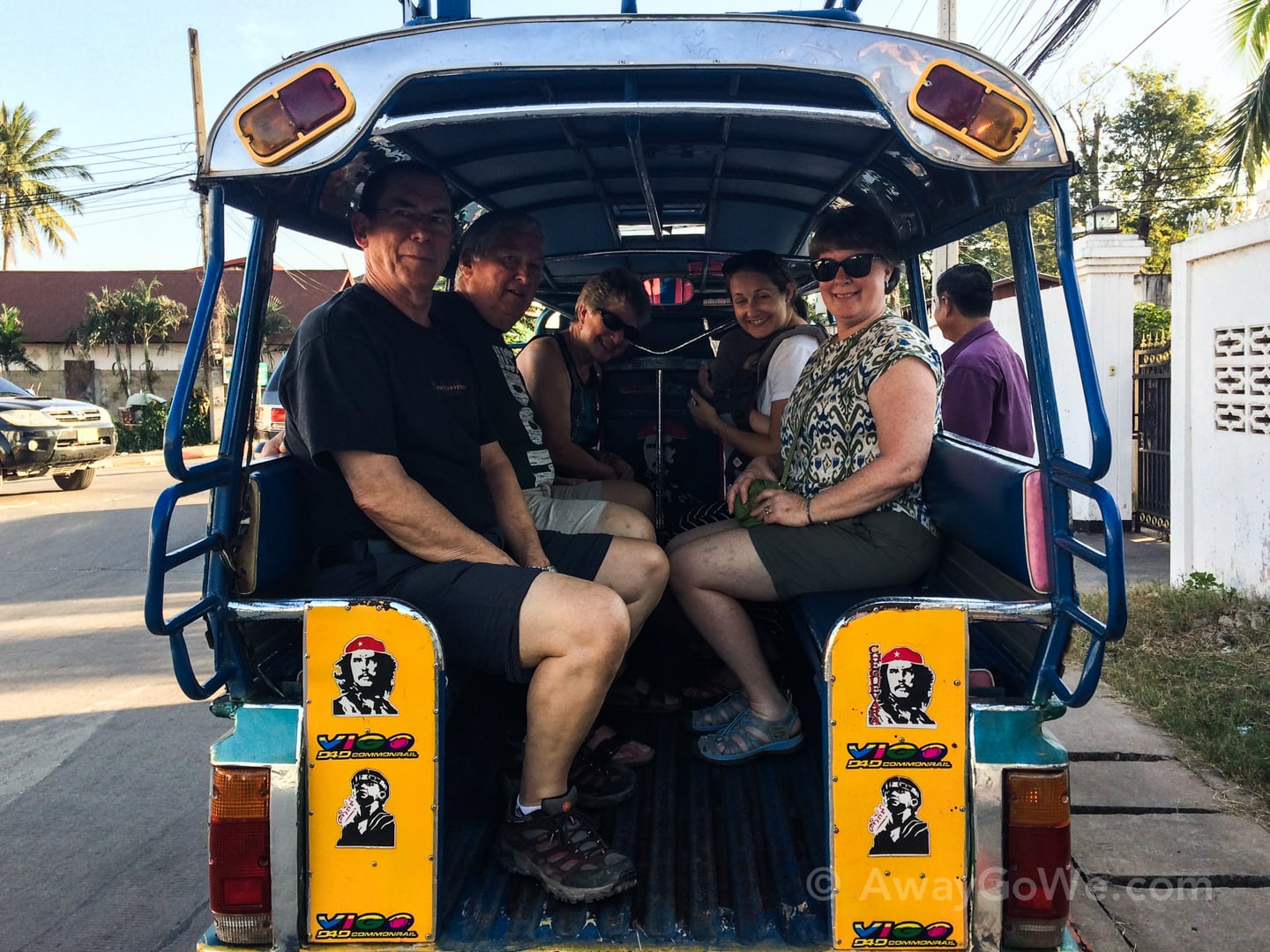
Back in Vientiane, the group has 24 hours before their flight out of Laos the next day. We call up our favorite tuk tuk driver, Mr. La, to take all of us around to a few last places. Mr. La works late and sleeps late, so we have to catch him when we can.
Love these big, powerful tuk tuk in Laos. Almost the perfect urban vehicle design, in my book. I think some of them are even diesel. Lighter, agile and more fun than a full on songteau (pick-up with seating cage on the back), but more spacious and more powerful than your standard motorcycle-based tuk tuk. Someone is selling one across the street just like it, but I hear you need special licensing to operate. It’s also the Thai version (stick shift on the left), which I’m not sure I’d want.
On to the fresh market!
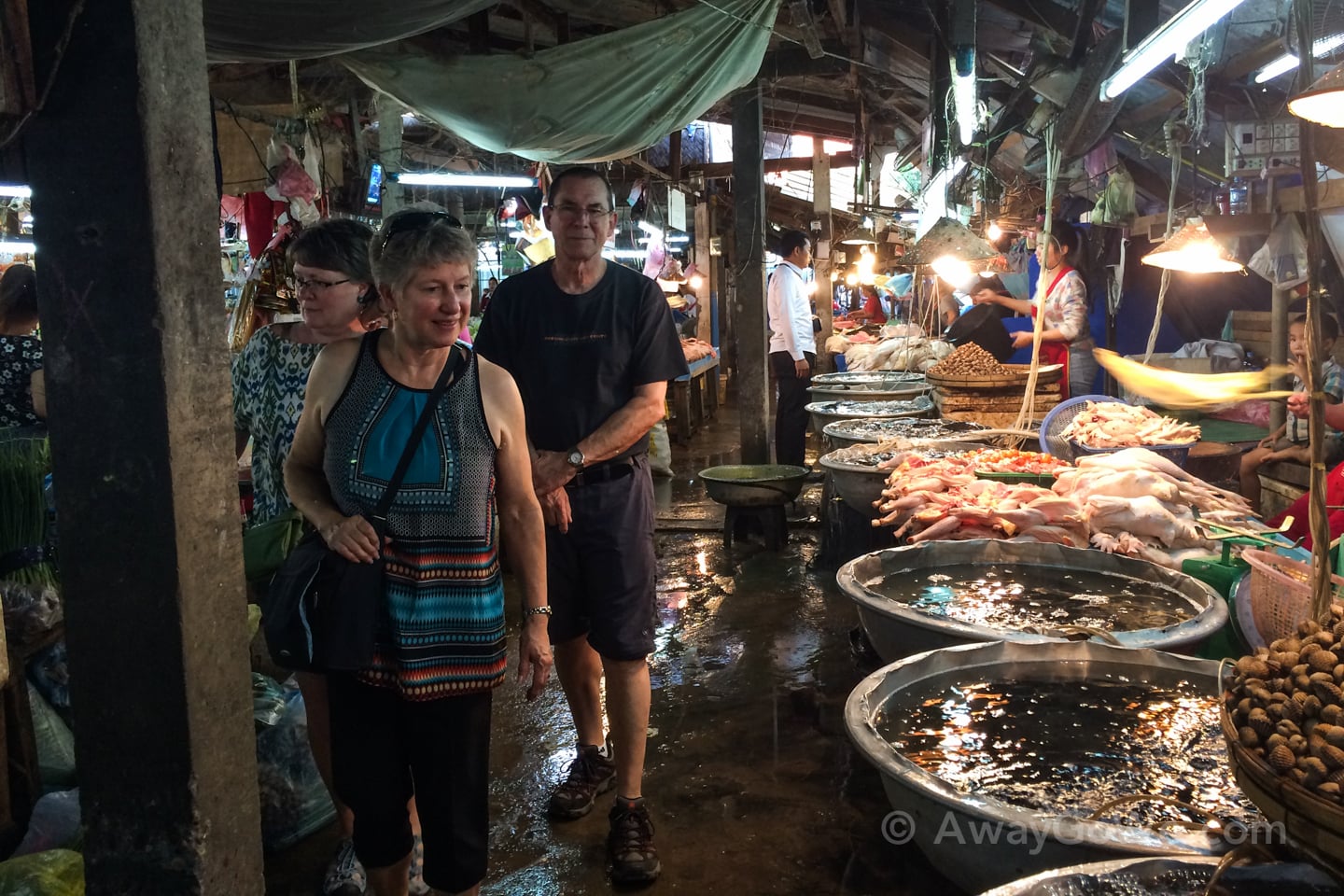
We stumbled across Saphanthong Market (aka 103 Market, aka Lao-Thai Market) on Lao-Thai Road on one of our first weekends here in Vientiane. You can easily miss it walking by. We were initially enticed by a glimpse of brightly colored fruits and vegetables neatly stacked in what appeared to be a shop and went to investigate. Walking through the small market, we realized it kept going, and kept going. You can find pretty much any type of non-dry-good item in this place.
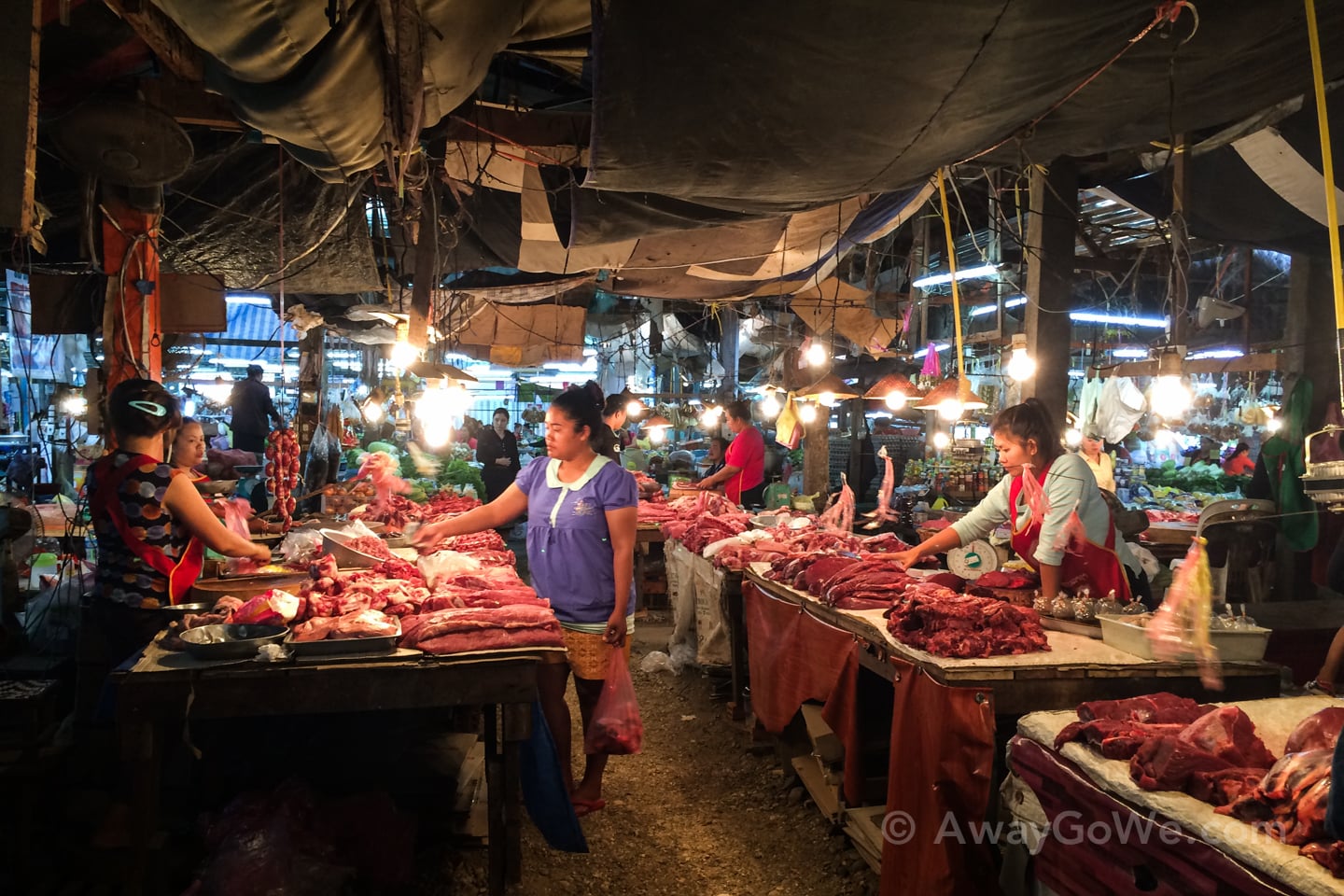
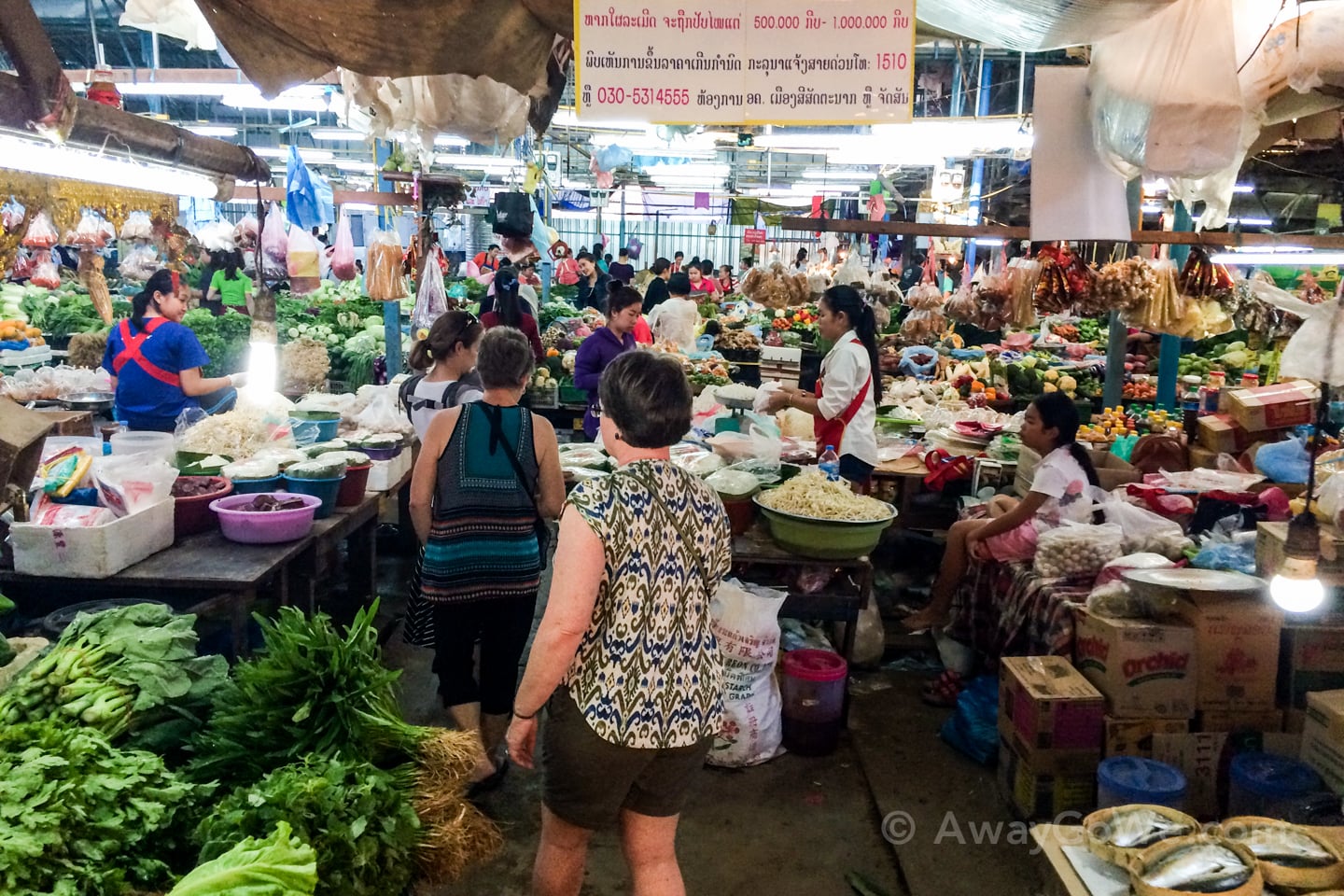
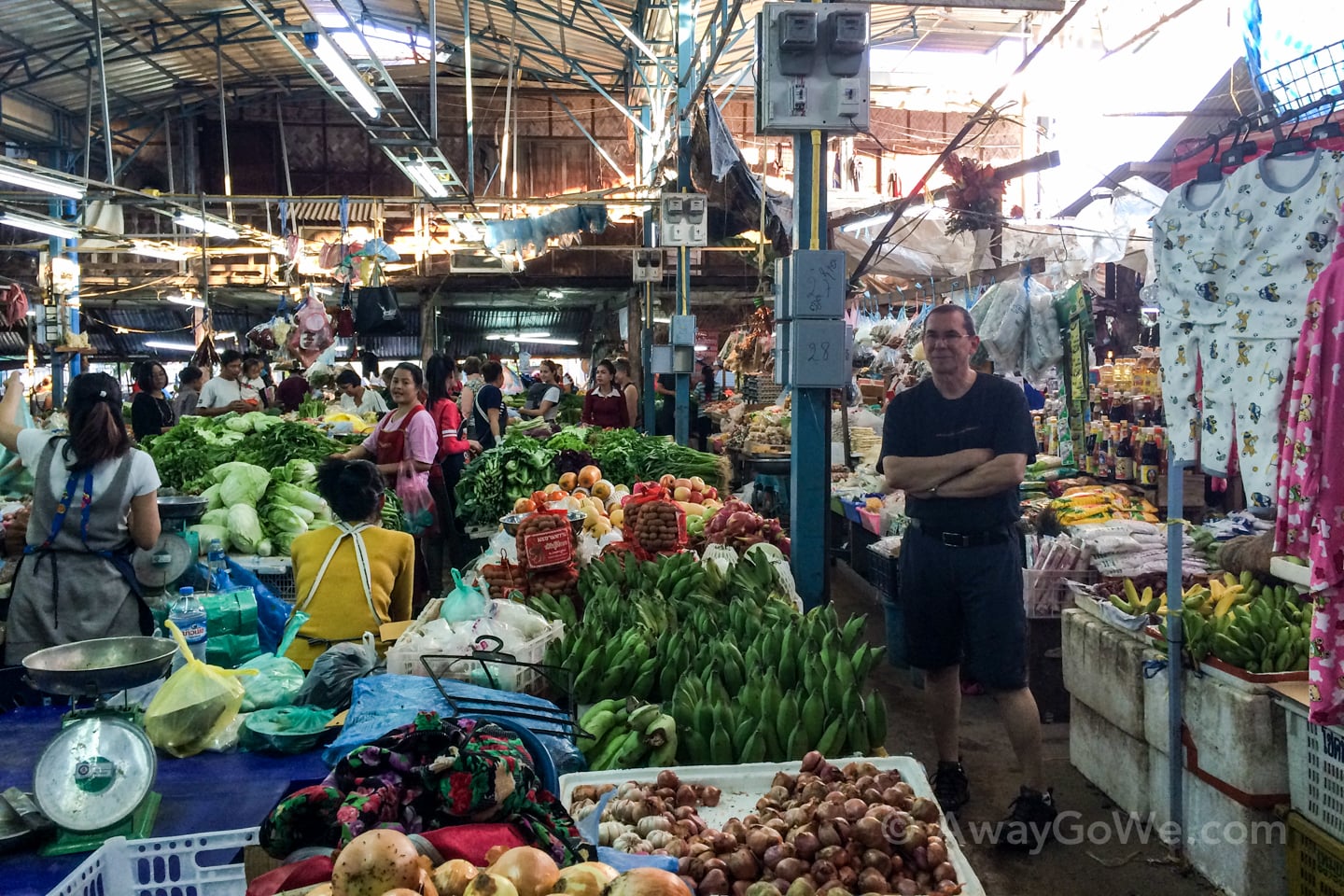
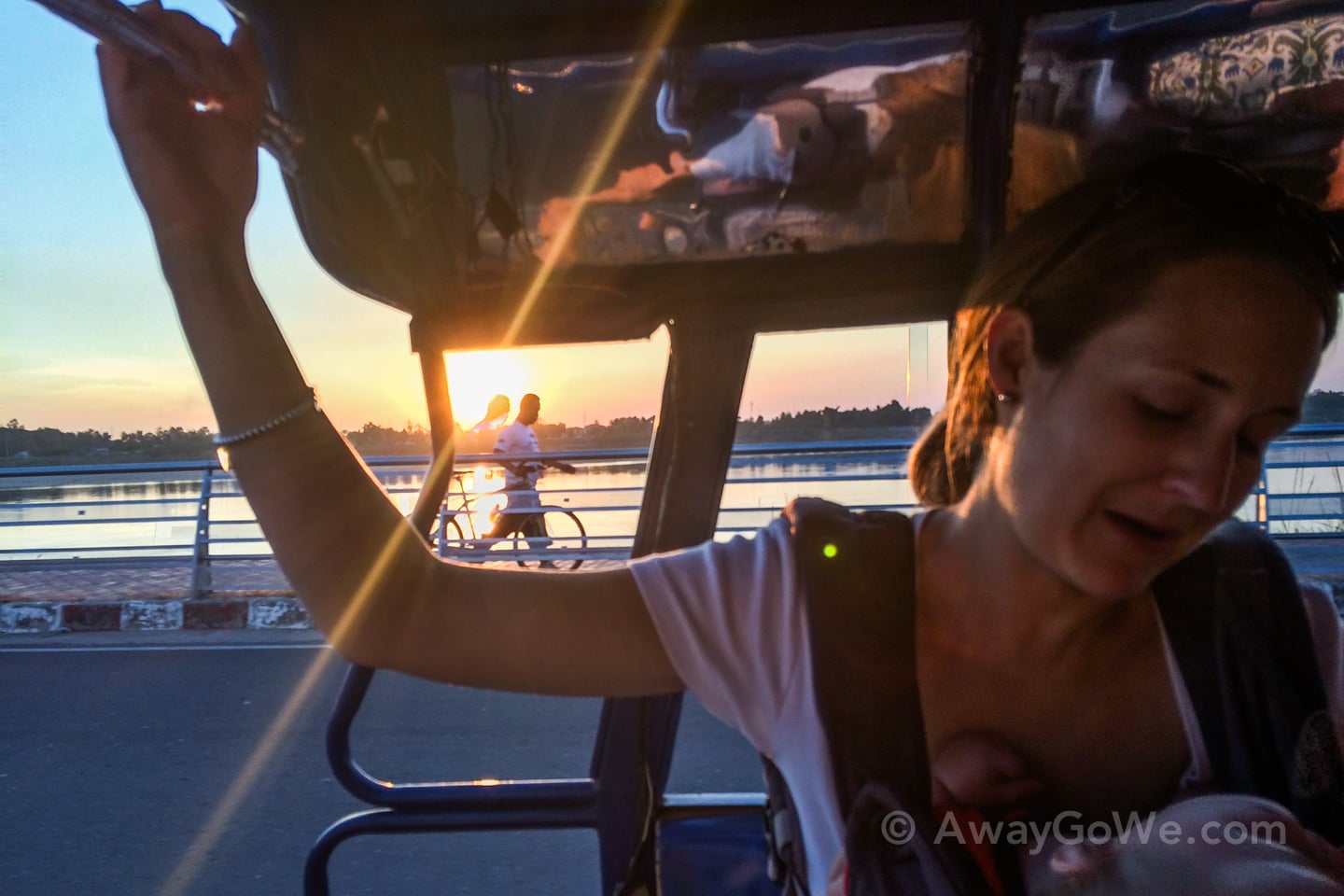
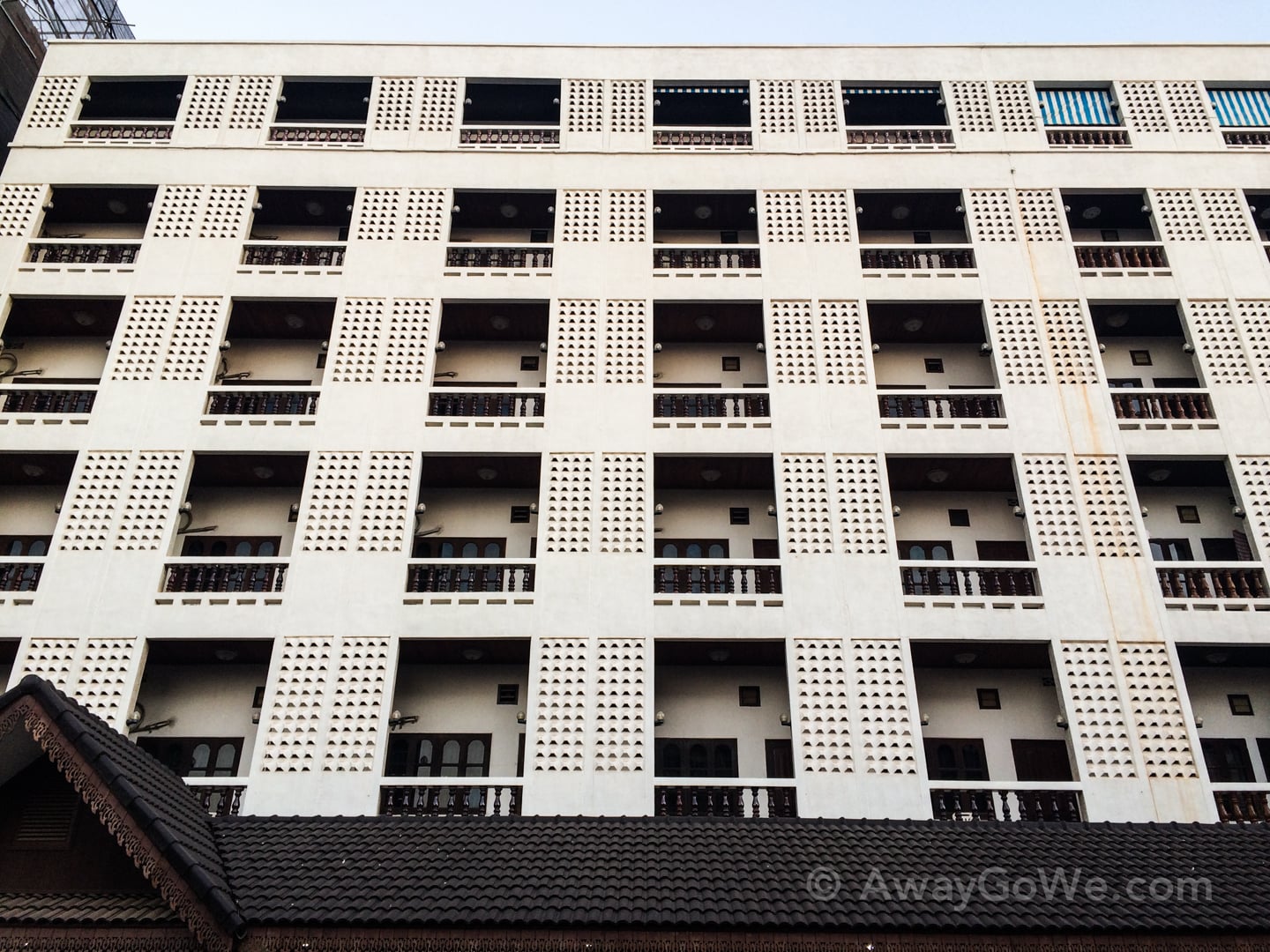
Trying the Namkhong Special beer, brewed with black sticky rice (with a Tiger beer on the side). The black sticky rice beer ain’t half bad.
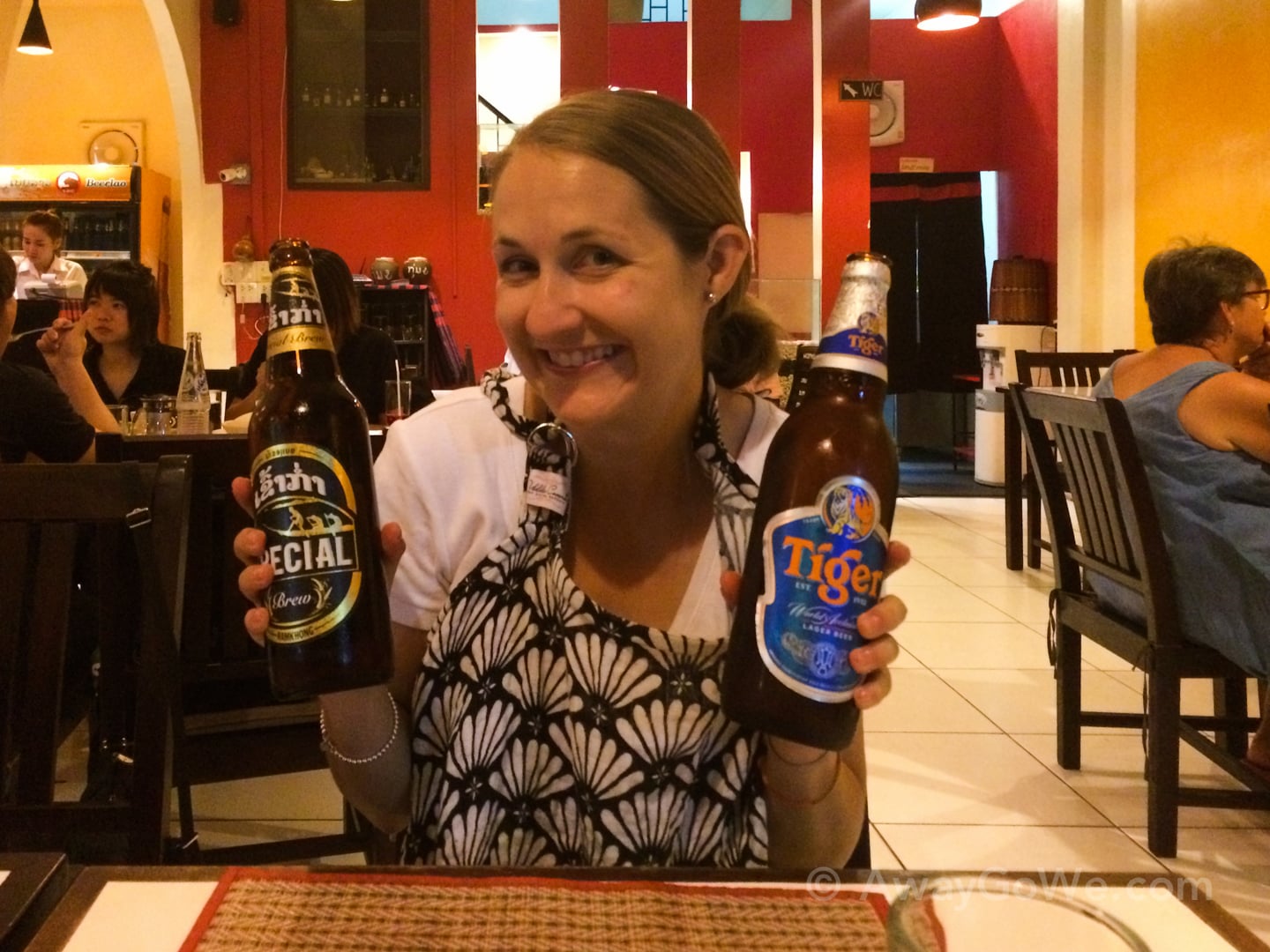
After almost three weeks with Lori’s parents and a week with John and Shirley, we’re wrapping things up at the same place we had dinner when Grammy and Grampy first arrived — Lao Kitchen — with Lao noodle soup, of course.
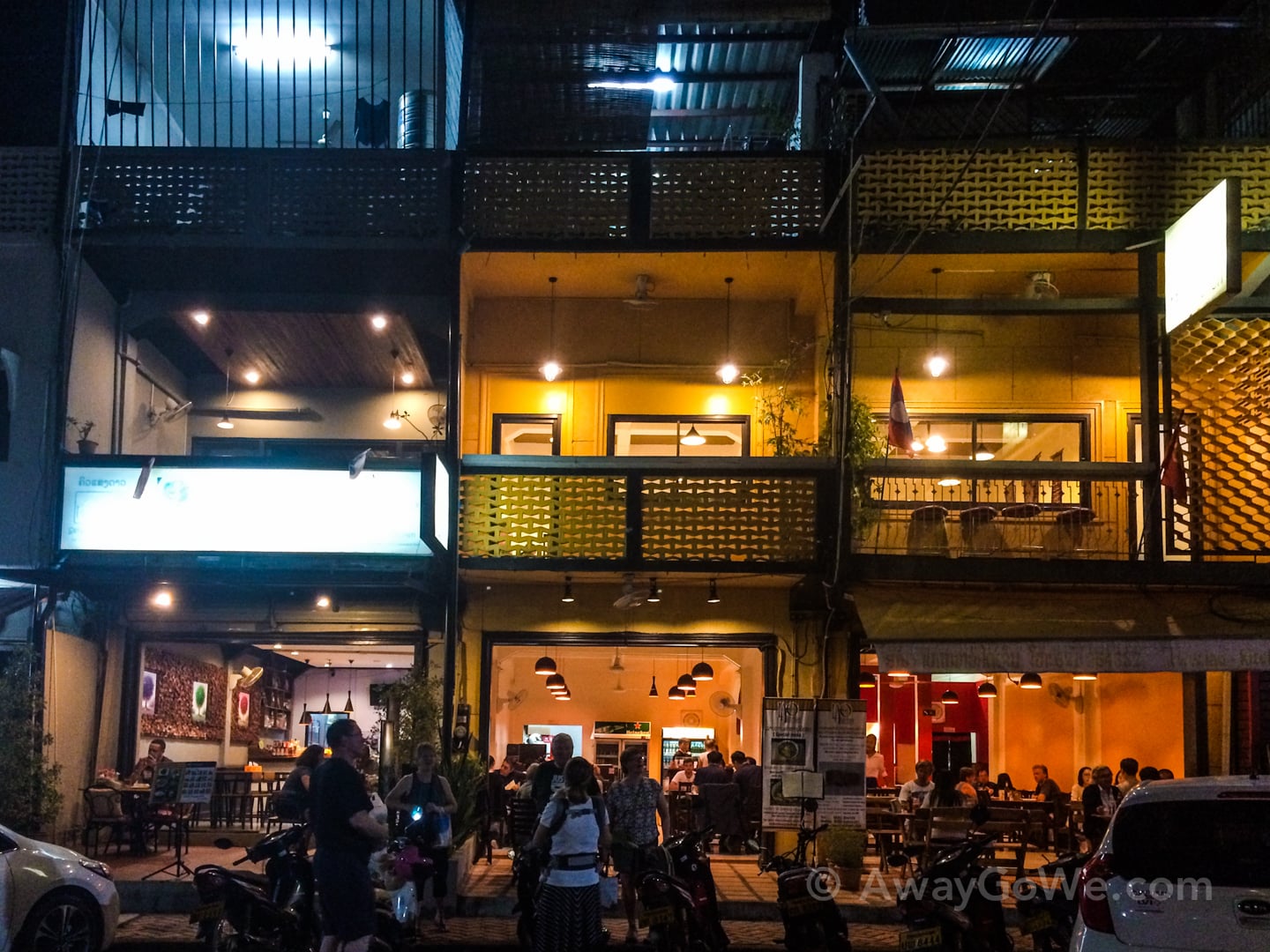
With some long flights ahead, one last morning stroll down the main drag of our ‘hood.
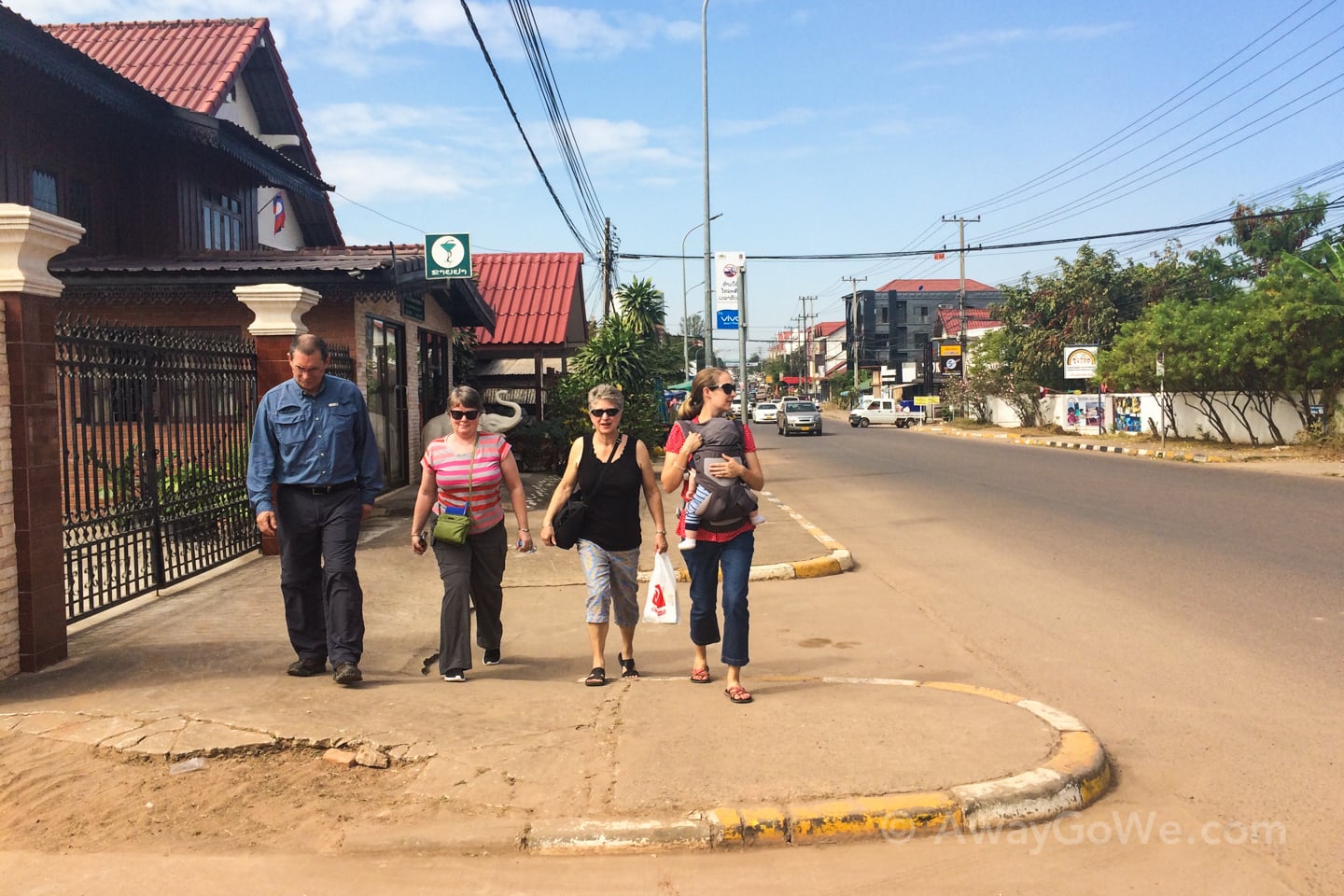
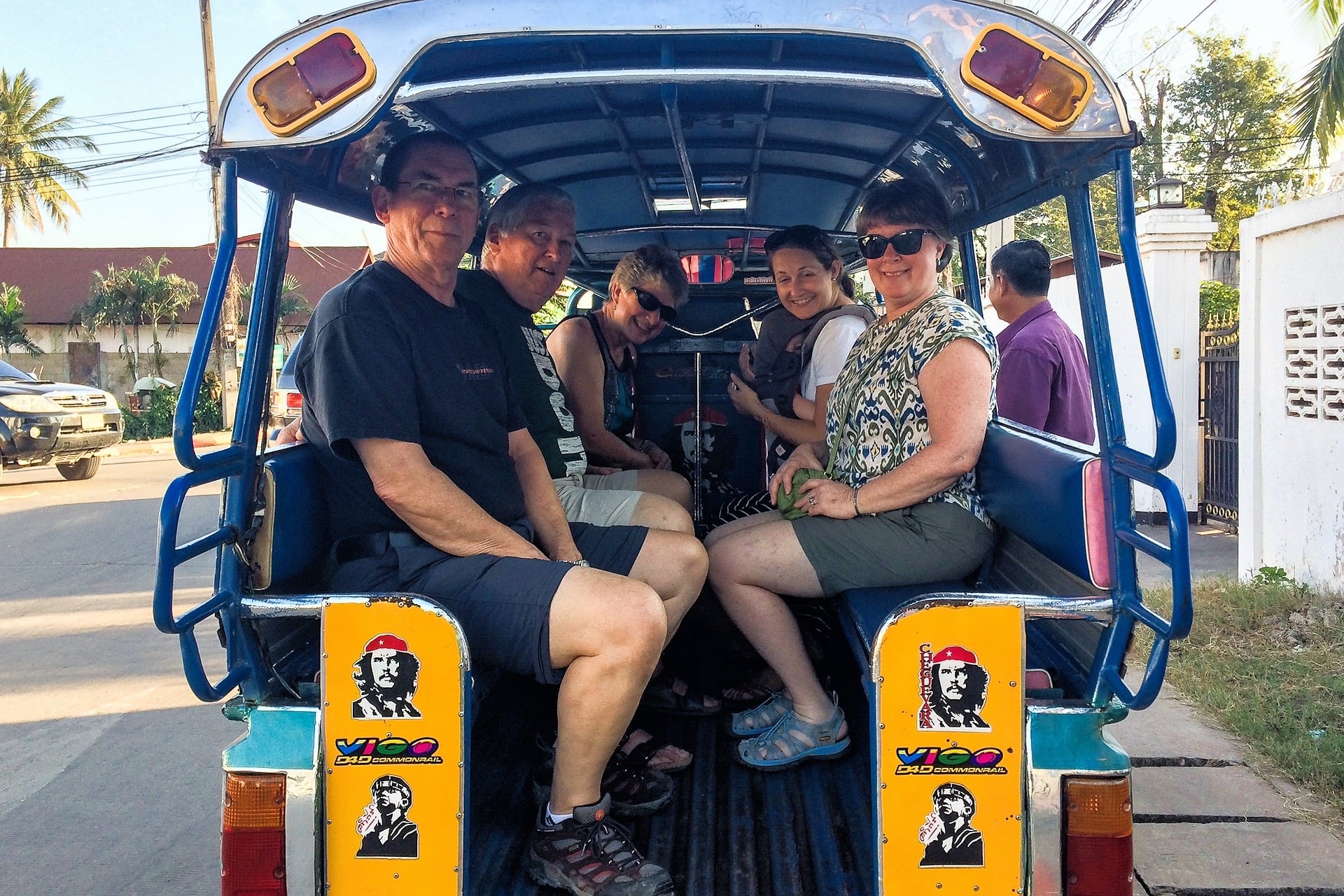
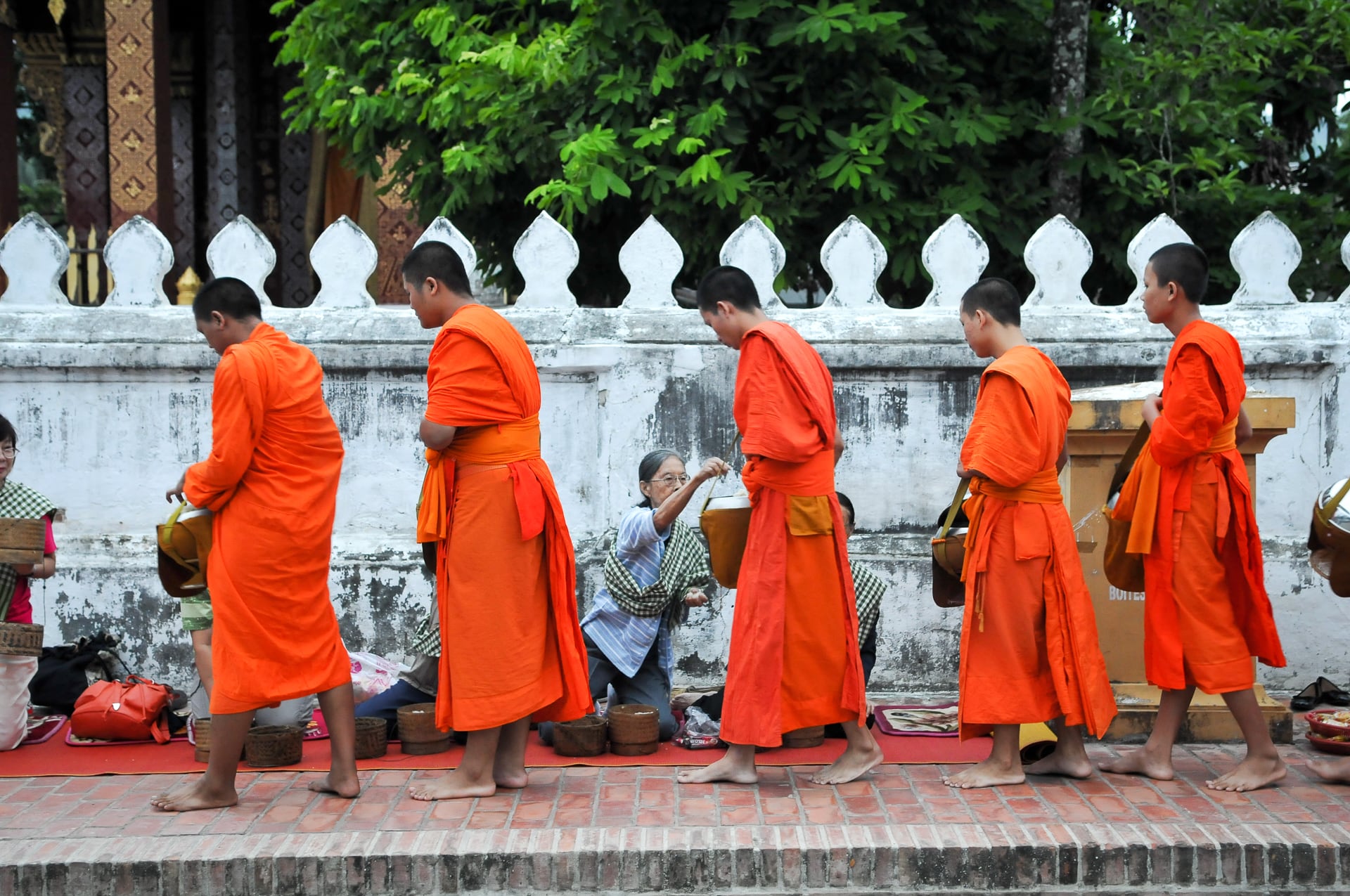
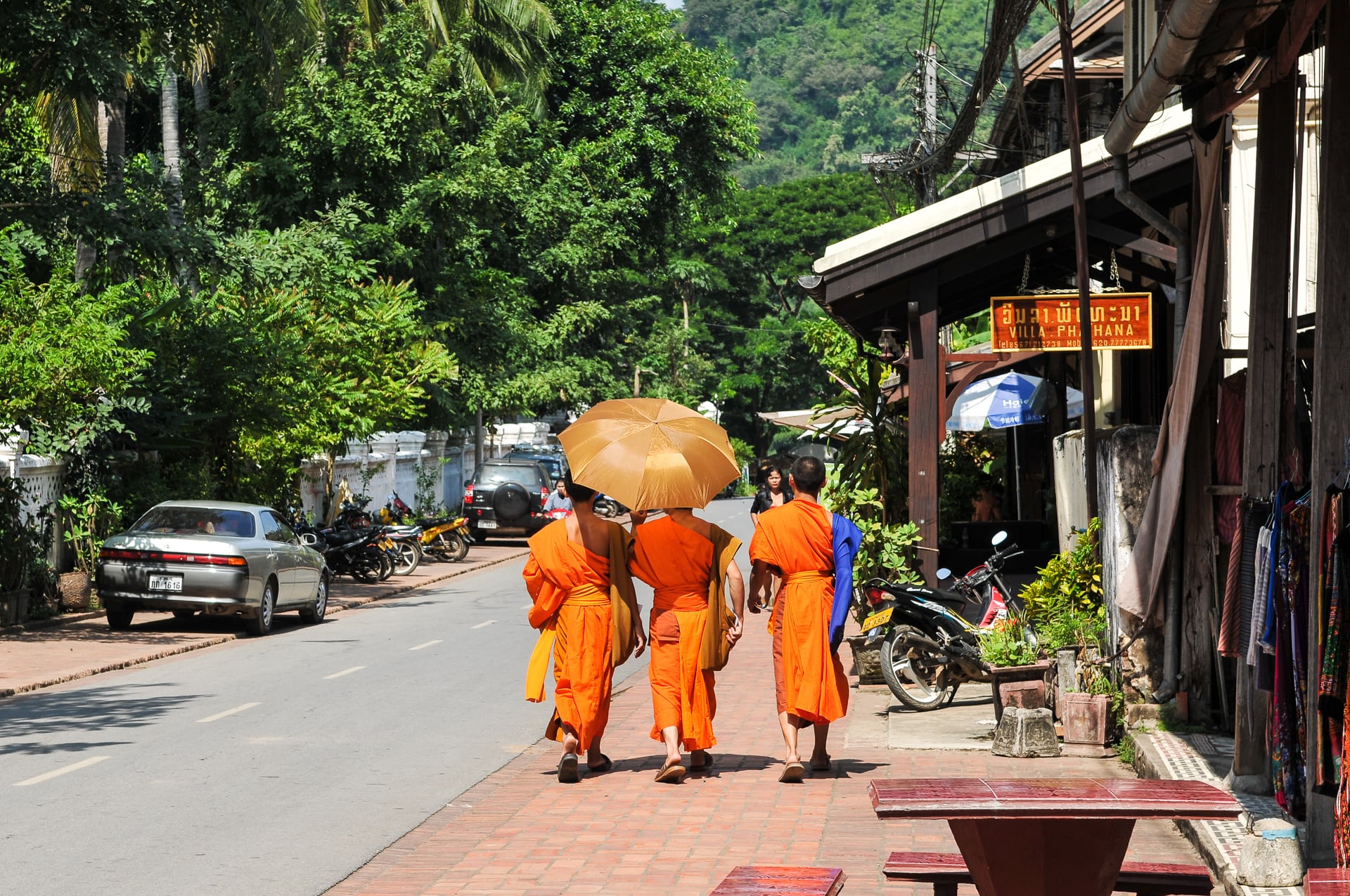
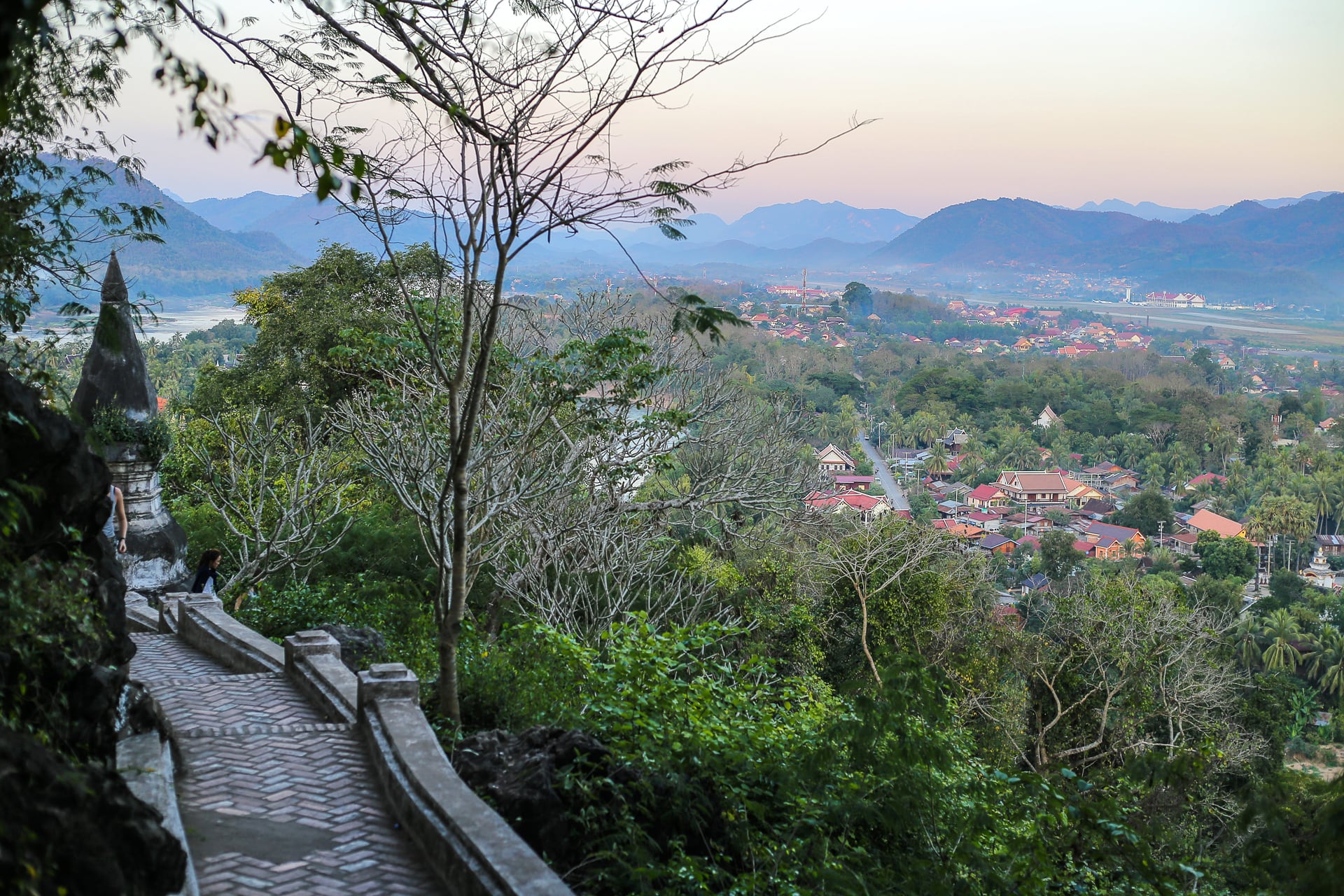
You’ve captured some good memories of our trip to Laos, too bad your photos don’t include the fresh smells from the market. Great photos and memories.